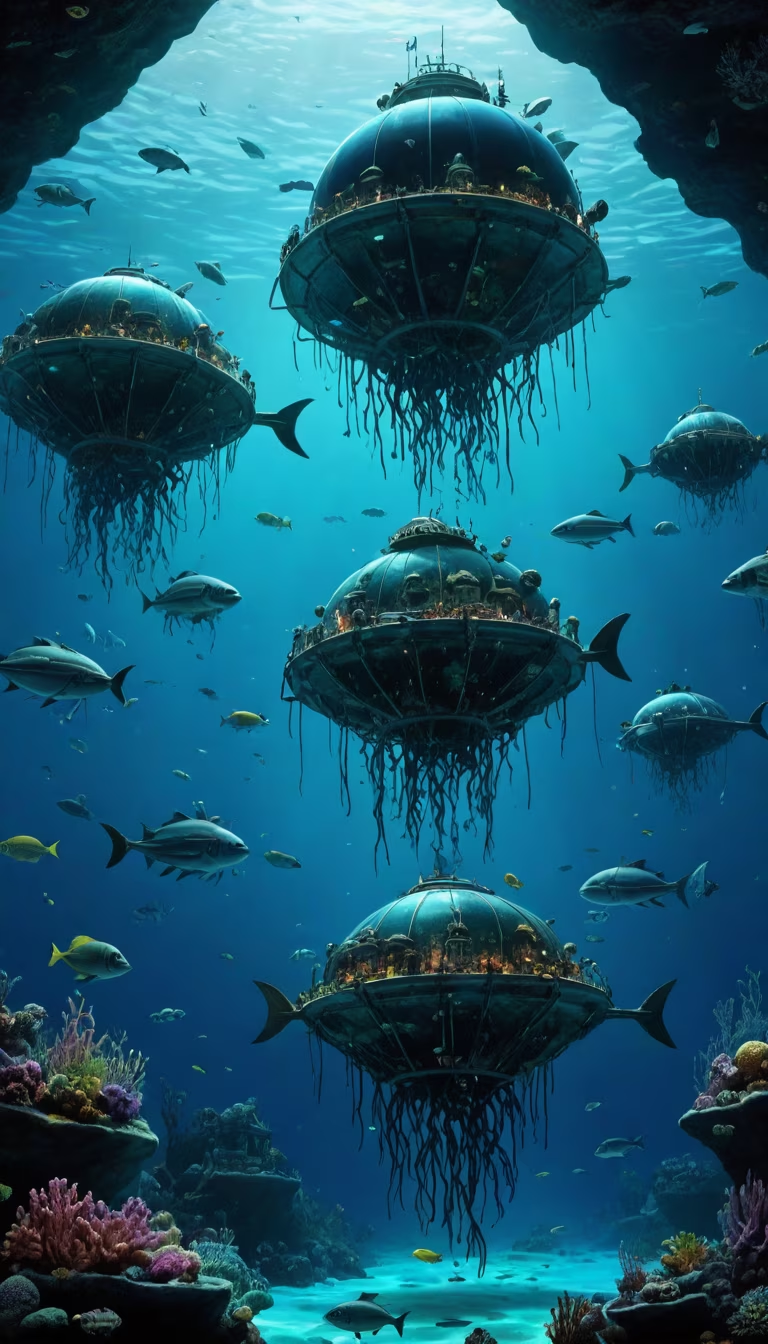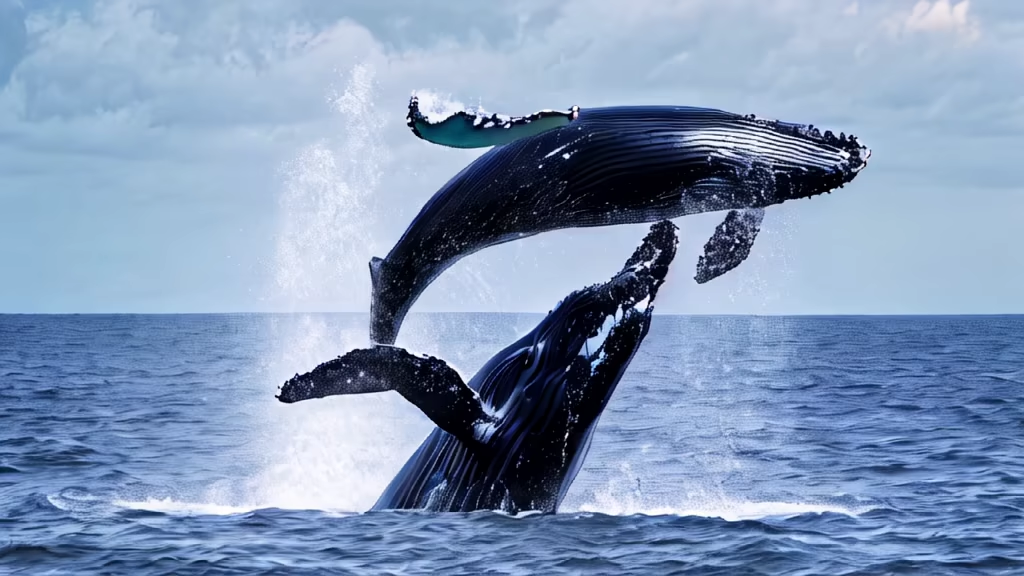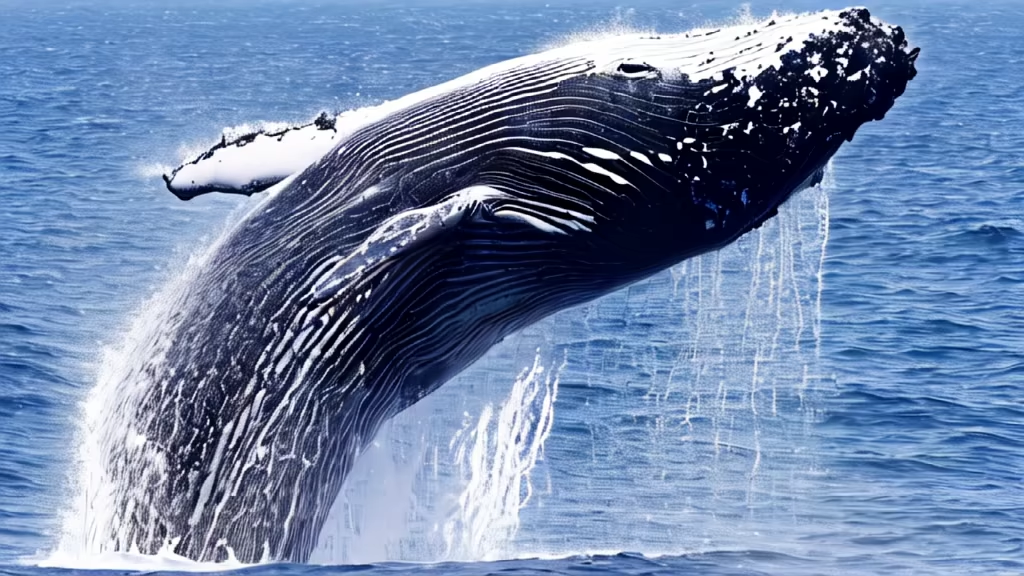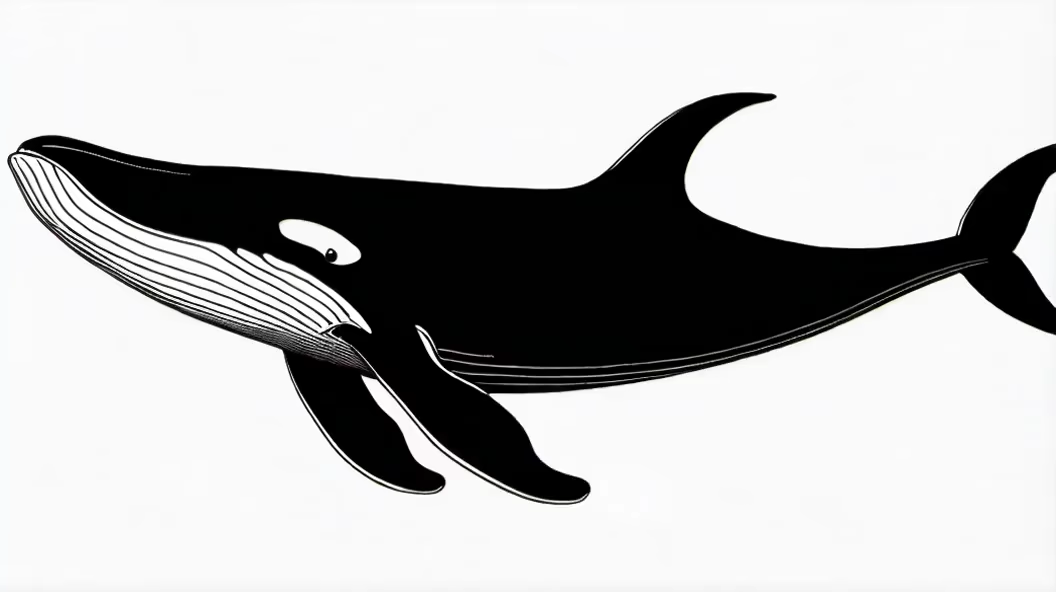Prompt: imagine you have two things that look different but share some hidden similarities, like a whale's flipper and a human arm. Homology theory is like a detective kit for scientists—it helps them figure out these hidden connections. It looks at structures in different creatures and finds patterns, showing how even though things might seem different on the outside, they could have come from a common ancestor way back in history. It's like solving a puzzle to discover the family tree of living things!


Prompt: imagine you have two things that look different but share some hidden similarities, like a whale's flipper and a human arm. Homology theory is like a detective kit for scientists—it helps them figure out these hidden connections. It looks at structures in different creatures and finds patterns, showing how even though things might seem different on the outside, they could have come from a common ancestor way back in history. It's like solving a puzzle to discover the family tree of living things!
Style: Anime


Prompt: imagine you have two things that look different but share some hidden similarities, like a whale's flipper and a human arm. Homology theory is like a detective kit for scientists—it helps them figure out these hidden connections. It looks at structures in different creatures and finds patterns, showing how even though things might seem different on the outside, they could have come from a common ancestor way back in history. It's like solving a puzzle to discover the family tree of living things!
Style: Craft Clay


Prompt: Create a diverse set of AI-generated images showcasing unique and visually striking designs of fish fins. Explore a range of shapes, patterns, and colors to capture the beauty and variety found in the fins of different fish species. Each image should emphasize the intricate details and distinctive characteristics that make each fin stand out in an underwater world


Prompt: FROM PATTERNS AND FORMS TO PLACES AND PEOPLE The first theme, Natural Analogs, examines the simulation of naturally occurring shapes, sequences, and patterns with varying degrees of abstraction. ‘Here, nature’s aesthetic complexities, which conform to simple mathematical laws—the equations that generate patterns, cones, and pyramids, spirals and waves, and the topological rules of geometry—find new expressions in a digital age,’ explains the curator. Combining humans’ primal fascination with patterns and the wonders of computational technologies, Nervous System design studio lands at the Biophilia DAM exhibition with its undulating Floraform Chandelier inspired by the ruffled edges of flowers. The hanging light was developed with generative algorithms and fabricated using an additive 3D-printing process, casting a dense forest of shadows and enveloping the viewer in an environment of algorithmically grown plant forms.
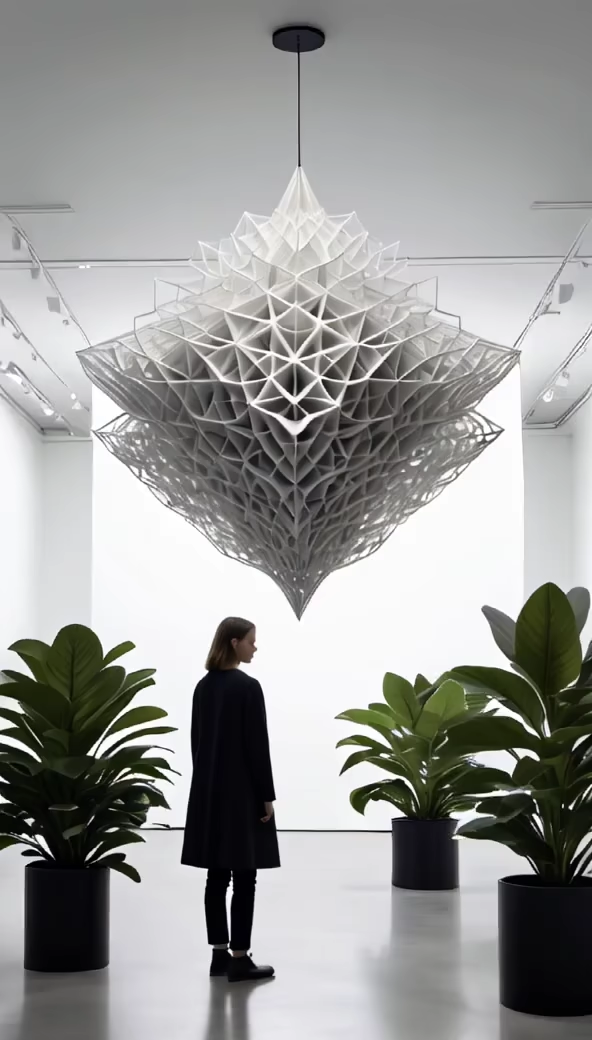

Prompt: FROM PATTERNS AND FORMS TO PLACES AND PEOPLE The first theme, Natural Analogs, examines the simulation of naturally occurring shapes, sequences, and patterns with varying degrees of abstraction. ‘Here, nature’s aesthetic complexities, which conform to simple mathematical laws—the equations that generate patterns, cones, and pyramids, spirals and waves, and the topological rules of geometry—find new expressions in a digital age,’ explains the curator. Combining humans’ primal fascination with patterns and the wonders of computational technologies, Nervous System design studio lands at the Biophilia DAM exhibition with its undulating Floraform Chandelier inspired by the ruffled edges of flowers. The hanging light was developed with generative algorithms and fabricated using an additive 3D-printing process, casting a dense forest of shadows and enveloping the viewer in an environment of algorithmically grown plant forms.










Prompt: There are also some strange creatures with irregular shapes, some seem to be made of liquid condensation, and some look like weird creatures with countless tentacles. Their movements are extremely flexible and seem to be unaffected by gravity.
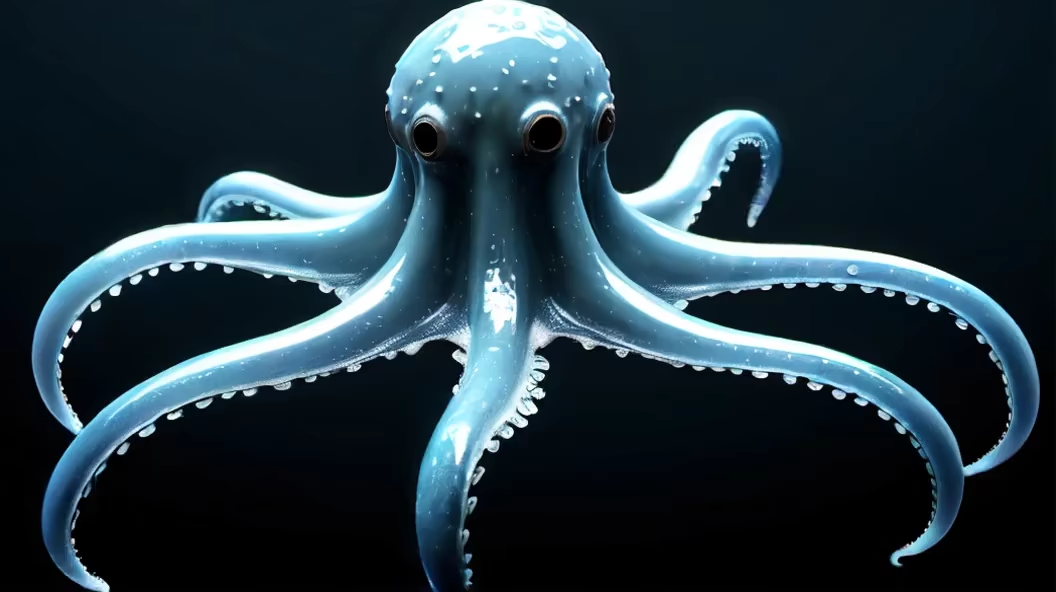
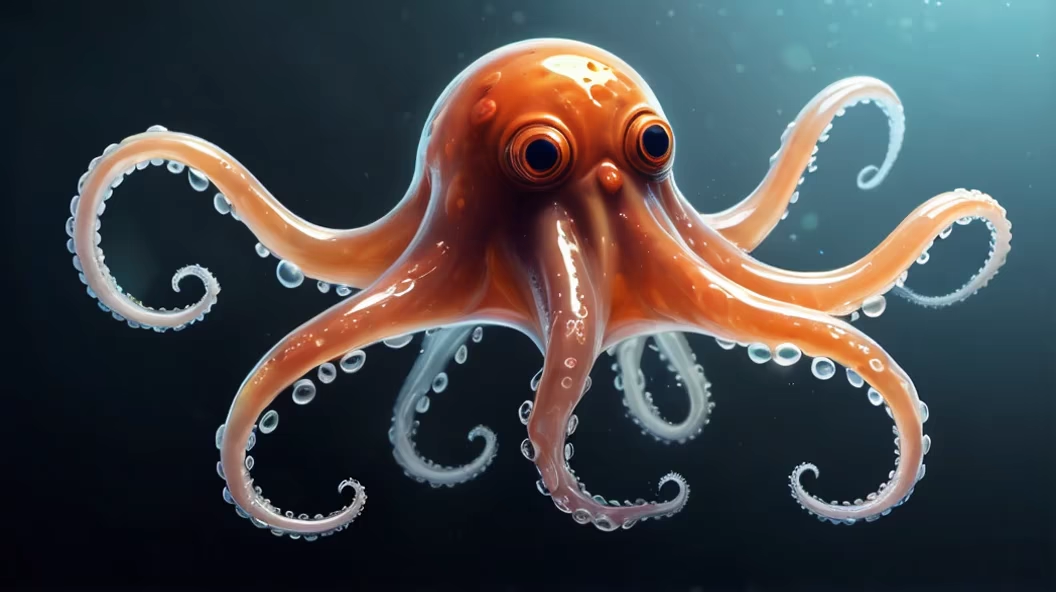

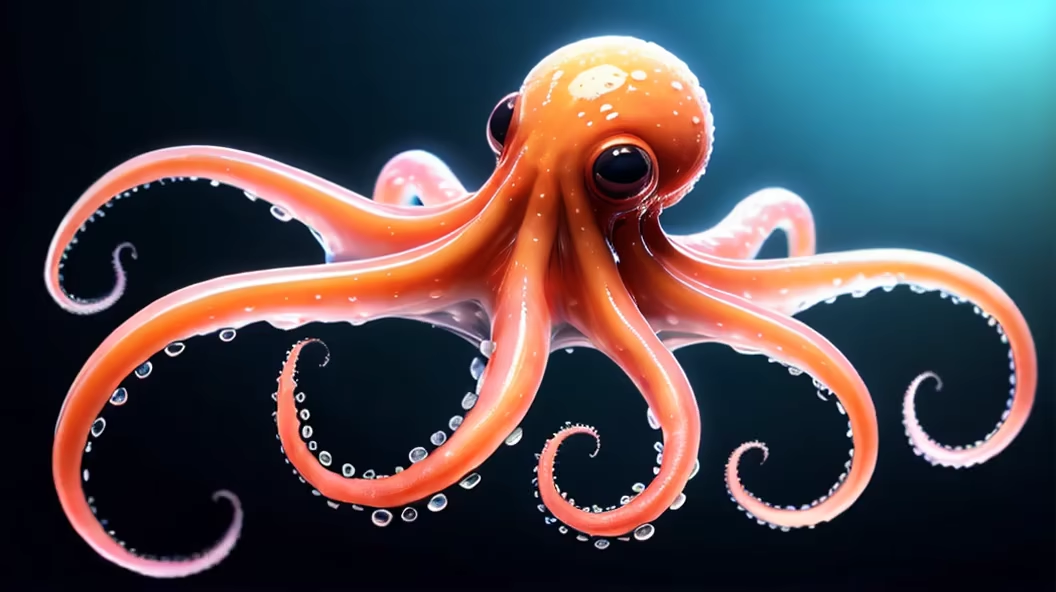
Prompt: Illustrate an otherworldly extraterrestrial fish with bioluminescent patterns and unconventional fins.\"
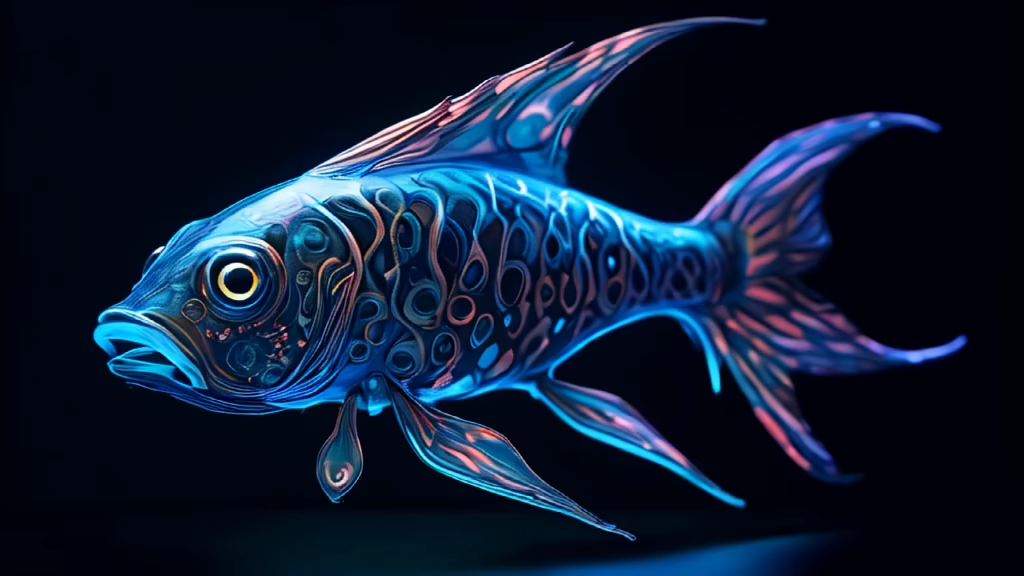
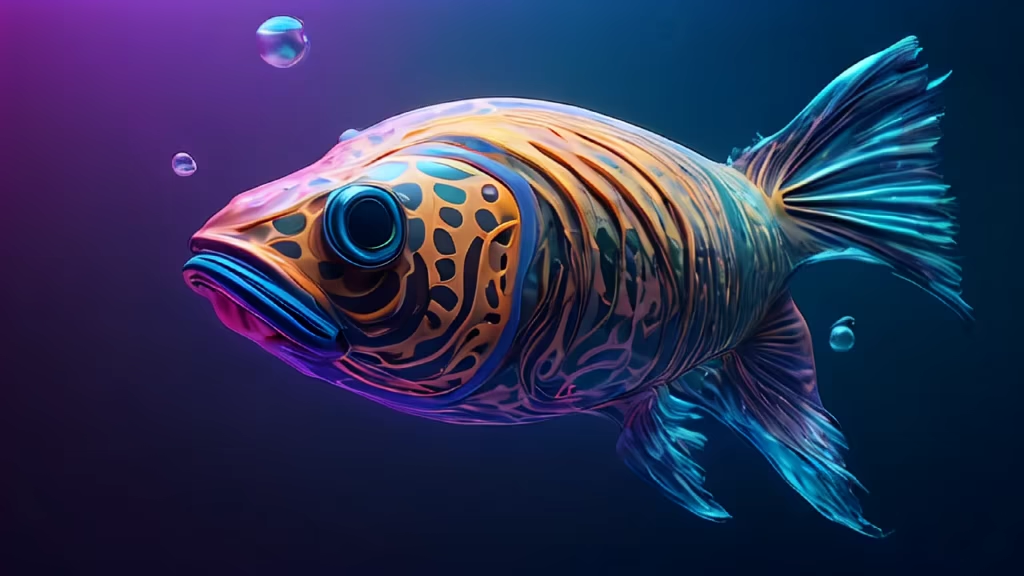
Prompt: The whale jumped out of the door of space, and the body that jumped out took on the form of a whale, and the tail that had not yet jumped out took on a geometric shape
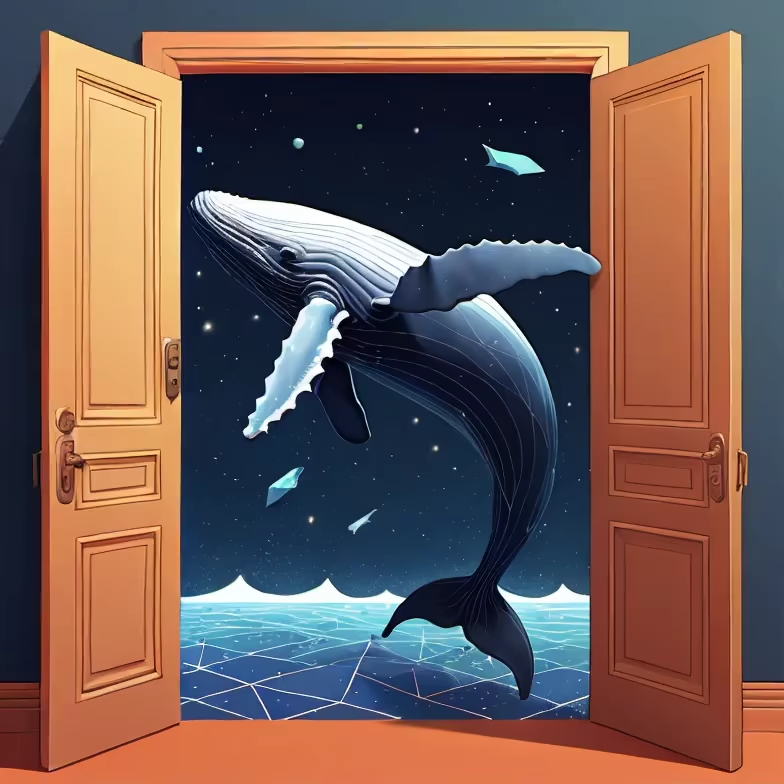
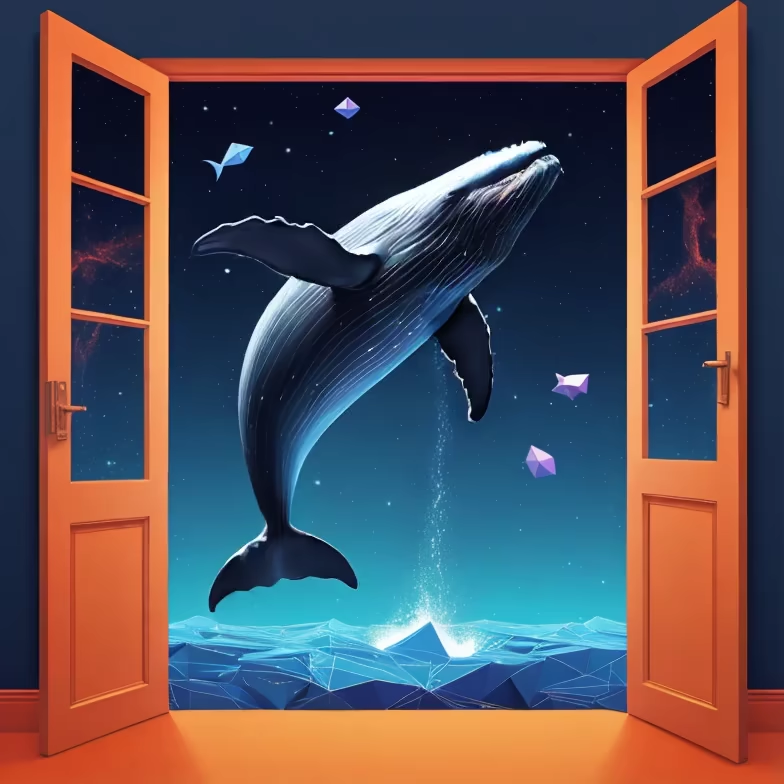
Prompt: The whale jumped out of the door of space, and the body that jumped out took on the form of a whale, and the tail that had not yet jumped out took on a geometric shape


Prompt: Architecture comes to life. Organic forms and biology merge with design and engineering, Creating an innovation ecosystem.
Negative: blurred, deformed, ungly

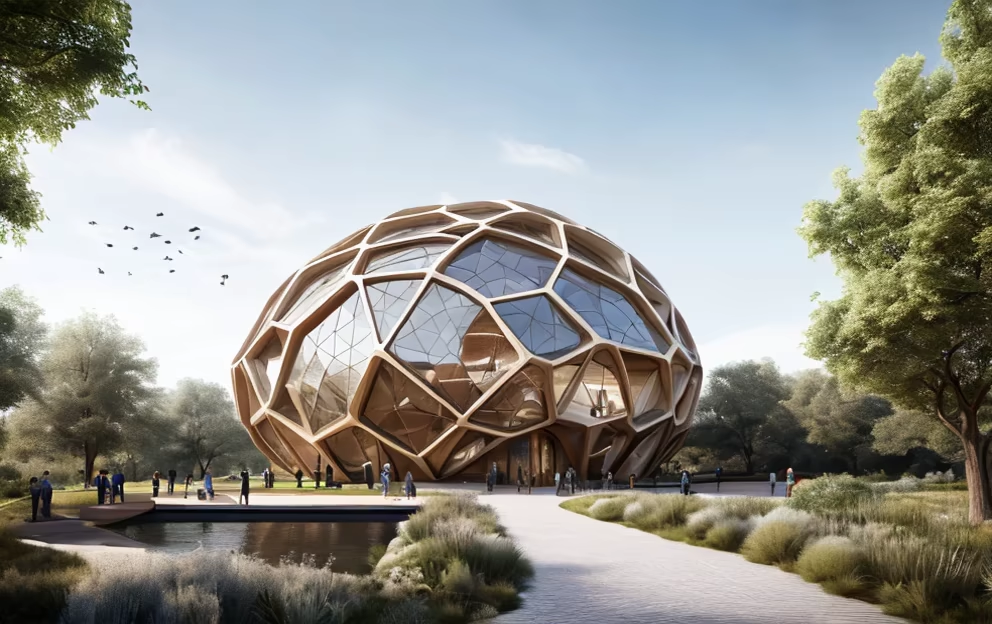

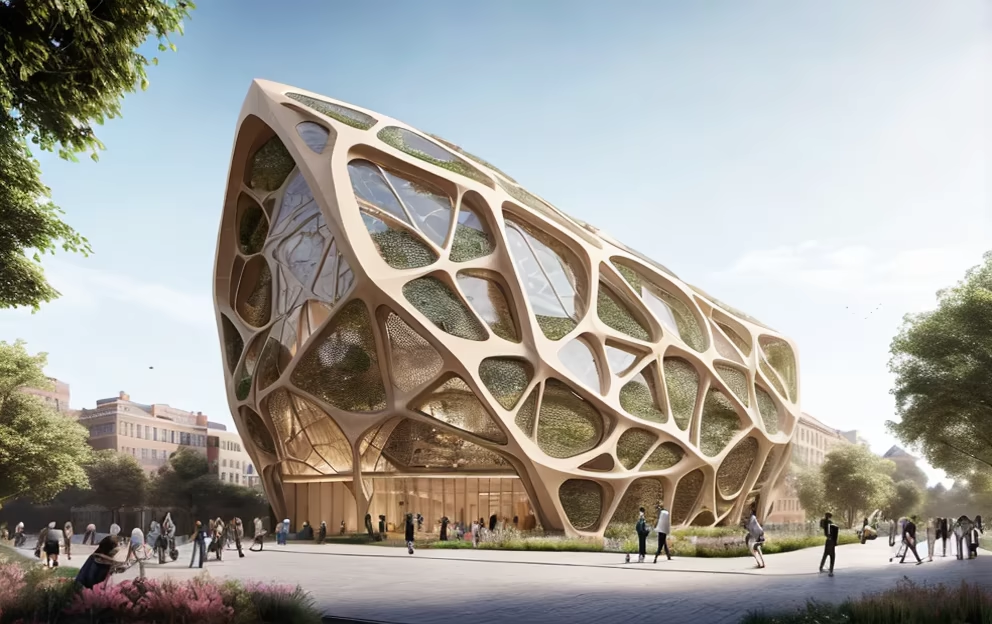
Prompt: Architecture comes to life. Organic forms and biology merge with design and engineering, Creating an innovation ecosystem.
Negative: blurred, deformed, ungly









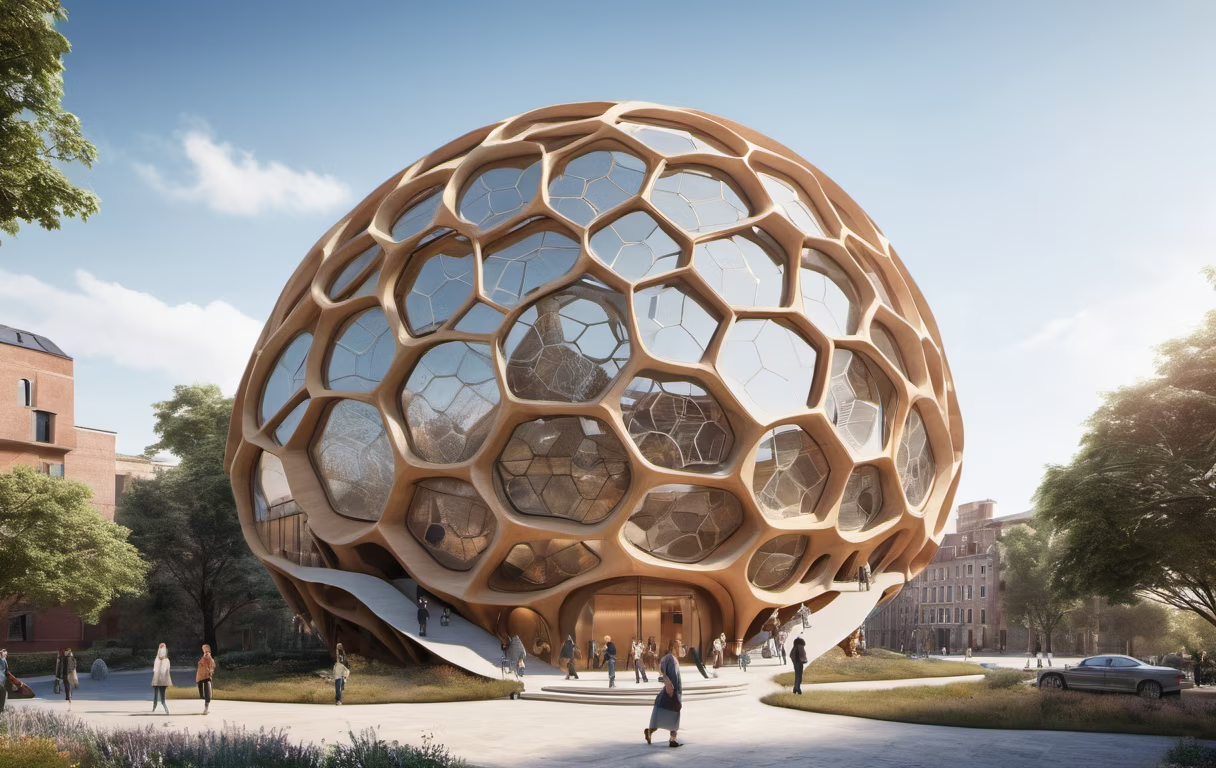









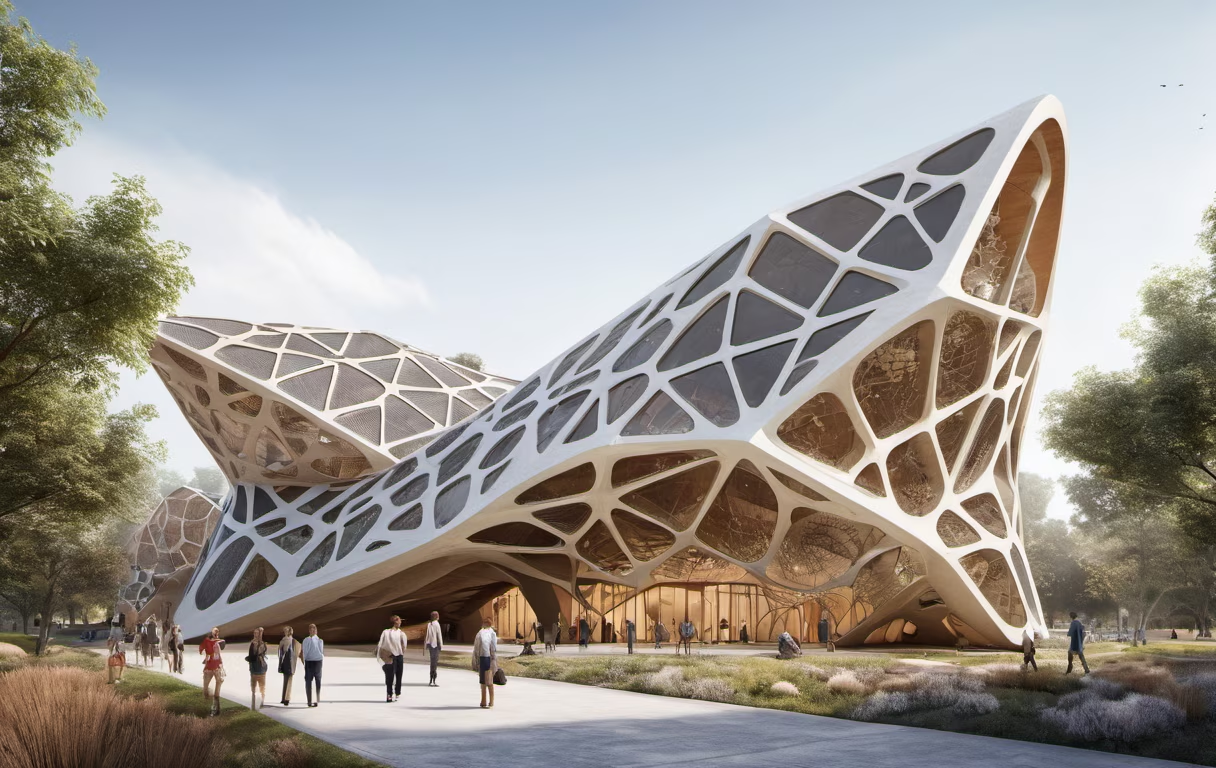
Prompt: Architecture comes to life. Organic forms and biology merge with design and engineering, Creating an innovation ecosystem.
Negative: blurred, deformed, ungly


Prompt: Architecture comes to life. Organic forms and biology merge with design and engineering, Creating an innovation ecosystem.
Negative: blurred, deformed, ungly
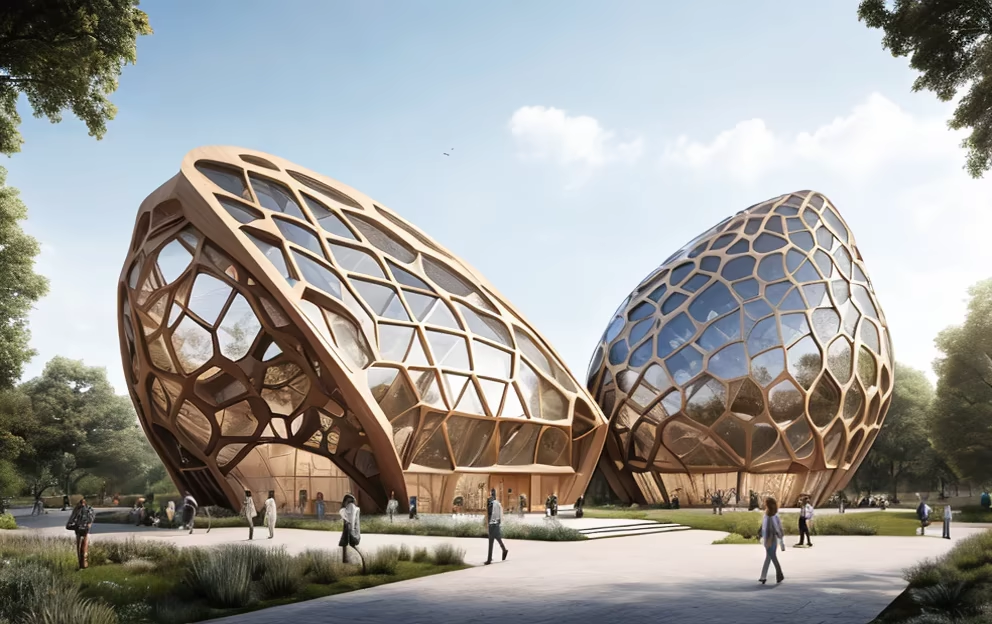

Prompt: Dolphins! Dolphins are one of the smartest animals in the ocean. They enjoy jumping and flipping, just like performing magic for everyone! And they also communicate with other dolphins through sound.
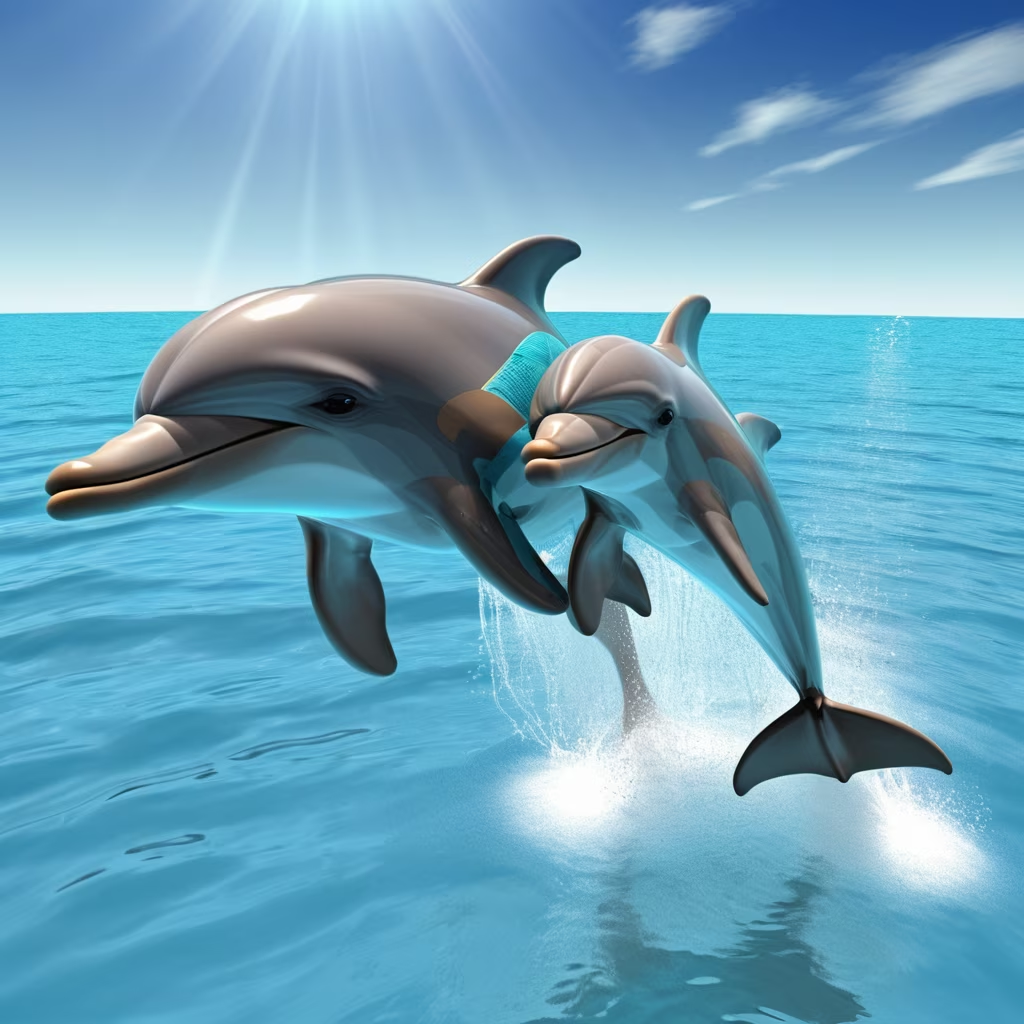

Prompt: A colossal whale, its back adorned with cascading bioluminescent patterns reminiscent of a waterfall. It glides through the ocean, a living marvel that leaves onlookers in awe.


Prompt: As the sun quietly sets into the vast ocean, stars twinkle in the night sky, and the ocean world becomes tranquil and mysterious. Let's explore this sleeping ocean together and see which marine creatures are still awake.


Prompt: In a tech-savvy lab, human scientists are focused on programming and debugging to create a powerful artificial intelligence. Born out of complex programming code, this AI is gradually becoming a symbol of intelligence by continuously learning and improving through the flow of data. The interface between humans and AI is simple and natural, and AI plays a huge role in helping people in their daily lives and tools in their professional fields. Looking to the future, humans and AI will live in harmony and create a better world together.




Prompt: Imagine a group of playful creatures called \"Whiskletots,\" with long, twisting whiskers that allow them to communicate through a secret language of whisker movements.


Prompt: Create a creative design of marine symbiosis in the form of a graphic, which may include isomerism, heteromorphism, and two-dimensional shapes. The idea should be sophisticated, innovative, distinctive, rich in meaning, and profound in symbolism.


Prompt: Physical Evolution: Abysammals have further adapted to their deep-sea habitats. They have developed elongated, streamlined bodies with bioluminescent patterns that help them navigate and communicate in the darkness of the abyss. Some species have evolved specialized sensory organs for detecting subtle changes in water pressure and temperature.Society: Abysammals have formed advanced civilizations in the deep-sea regions, complete with organized cities and complex societal structures. These underwater cities are constructed from materials sourced from the ocean floor and are designed to withstand the immense pressure of the abyss. Each city is led by a council of elders, chosen for their wisdom and experience.Language and Culture: Abysammals communicate primarily through a complex system of echolocation-imprint waves, which have evolved into a sophisticated language with regional dialects and cultural variations. Their culture places a strong emphasis on communal living, resource management, and the preservation of the delicate deep-sea ecosystem.Technology: Abysammals have developed advanced bioluminescent technology, including underwater lighting systems and communication devices. They have also mastered the art of underwater agriculture, cultivating bioluminescent organisms for both sustenance and illumination.Traditions: Abysammals have developed elaborate rituals and ceremonies centered around bioluminescent displays, which are used to celebrate important events such as births, unions, and rites of passage. They have a deep reverence for the abyss and its mysteries, often exploring uncharted depths in search of knowledge and resources.
Style: Photographic


Prompt: Create an artistic depiction of a fish merged with elements of circuitry and artificial intelligence, symbolizing the integration of technology and marine life.\"


Prompt: evolution from chimpanzee can be understood by examining the shared ancestry and the subsequent development of distinct traits that have culminated in the modern human species. Around 6-7 million years ago, humans and chimpanzees shared a common ancestor. This common ancestor likely resembled a chimp-like creature with some human-like traits. Over time, due to various environmental and genetic factors, including adaptations to new habitats and changing climates, the species diverged. One of the most notable differences between humans and chimpanzees is bipedalism or walking on two legs. The ability to walk upright is a defining characteristic of the human species and allowed our early ancestors to efficiently navigate the African savannah. This adaptation freed up the hands for other activities like tool use and eventually enabled the development of our sophisticated manual dexterity. Another significant evolution occurred in the brain. Human brains are much larger, relative to body size, compared to chimps. This increased brain size is associated with the development of higher cognitive functions, such as language, complex problem-solving, and rational thinking. The expansion of the brain also coincided with the development of more complex social structures and cultural advancements. Further differences can be observed in physical features such as the structure of the pelvis, limb proportions, and vocal apparatus. The human pelvis is wider and more bowl-shaped, facilitating bipedal locomotion and childbirth. Humans have longer legs relative to arm length compared to chimpanzees, which aids in efficient walking and running. The structure of the vocal apparatus in humans allows for a wide range of speech sounds, enabling complex language and communication. Although humans and chimpanzees have many shared genetic similarities, there have been numerous genetic changes over millions of years to produce the distinct traits observed in humans today. These changes can be attributed to a combination of natural selection, genetic mutations, and environmental pressures. In summary, human evolution from chimpanzee involved key developments such as bipedalism, larger brains, enhanced cognitive abilities, changes in physical features, and the development of complex language and culture. These evolutionary changes have led to the emergence of Homo sapiens as a distinct species, with unique characteristics that separate us from our ape relatives.


Prompt: evolution from chimpanzee can be understood by examining the shared ancestry and the subsequent development of distinct traits that have culminated in the modern human species. Around 6-7 million years ago, humans and chimpanzees shared a common ancestor. This common ancestor likely resembled a chimp-like creature with some human-like traits. Over time, due to various environmental and genetic factors, including adaptations to new habitats and changing climates, the species diverged. One of the most notable differences between humans and chimpanzees is bipedalism or walking on two legs. The ability to walk upright is a defining characteristic of the human species and allowed our early ancestors to efficiently navigate the African savannah. This adaptation freed up the hands for other activities like tool use and eventually enabled the development of our sophisticated manual dexterity. Another significant evolution occurred in the brain. Human brains are much larger, relative to body size, compared to chimps. This increased brain size is associated with the development of higher cognitive functions, such as language, complex problem-solving, and rational thinking. The expansion of the brain also coincided with the development of more complex social structures and cultural advancements. Further differences can be observed in physical features such as the structure of the pelvis, limb proportions, and vocal apparatus. The human pelvis is wider and more bowl-shaped, facilitating bipedal locomotion and childbirth. Humans have longer legs relative to arm length compared to chimpanzees, which aids in efficient walking and running. The structure of the vocal apparatus in humans allows for a wide range of speech sounds, enabling complex language and communication. Although humans and chimpanzees have many shared genetic similarities, there have been numerous genetic changes over millions of years to produce the distinct traits observed in humans today. These changes can be attributed to a combination of natural selection, genetic mutations, and environmental pressures. In summary, human evolution from chimpanzee involved key developments such as bipedalism, larger brains, enhanced cognitive abilities, changes in physical features, and the development of complex language and culture. These evolutionary changes have led to the emergence of Homo sapiens as a distinct species, with unique characteristics that separate us from our ape relatives.
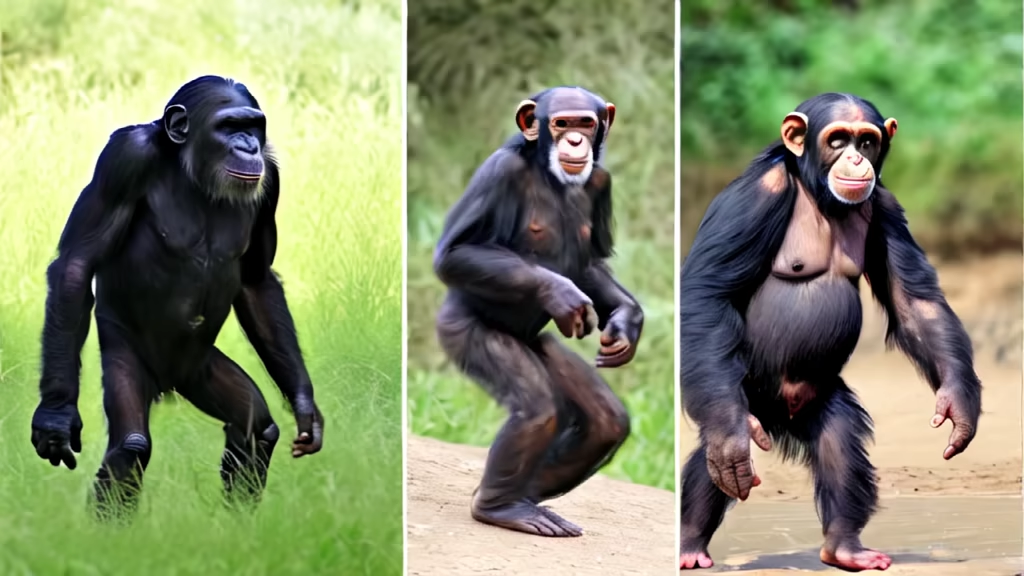
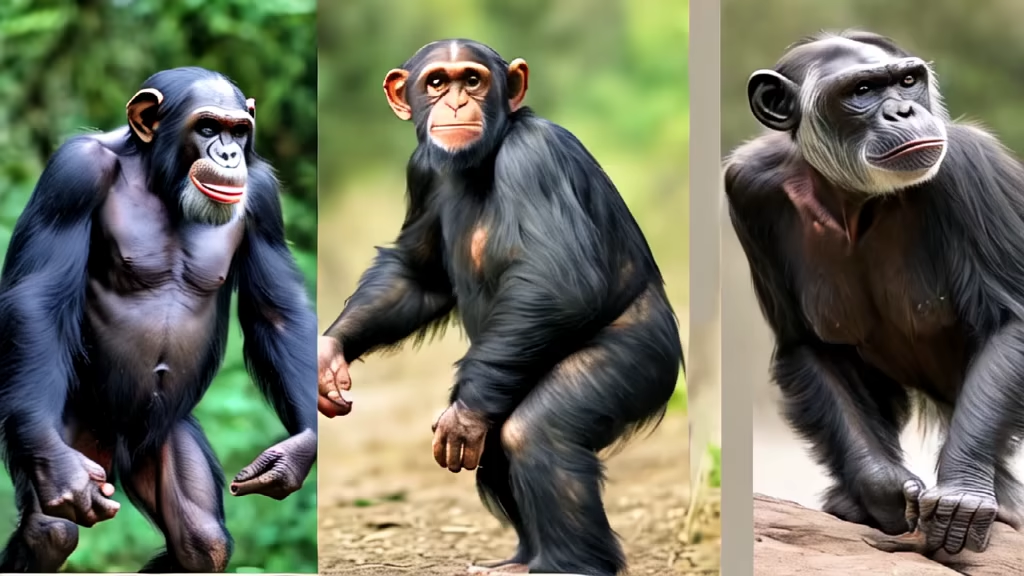
Prompt: write a clue for stable diffusion so that he draws a picture of the “Creation of Adam” by Michelangelo Buonarroti, but replaces all the people with skeletons.




Prompt: write a clue for stable diffusion so that he draws a picture of the “Creation of Adam” by Michelangelo Buonarroti, but replaces all the people with skeletons.


Prompt: write a clue for stable diffusion so that he draws a picture of the “Creation of Adam” by Michelangelo Buonarroti, but replaces all the people with skeletons.


Prompt: The whale jumped out of the door of space, and the body that jumped out took on the form of a whale, and the tail that had not yet jumped out took on a geometric shape,Starry sky in the background


Prompt: The whale jumped out of the door of space, and the body that jumped out took on the form of a whale, and the tail that had not yet jumped out took on a geometric shape,Starry sky in the background

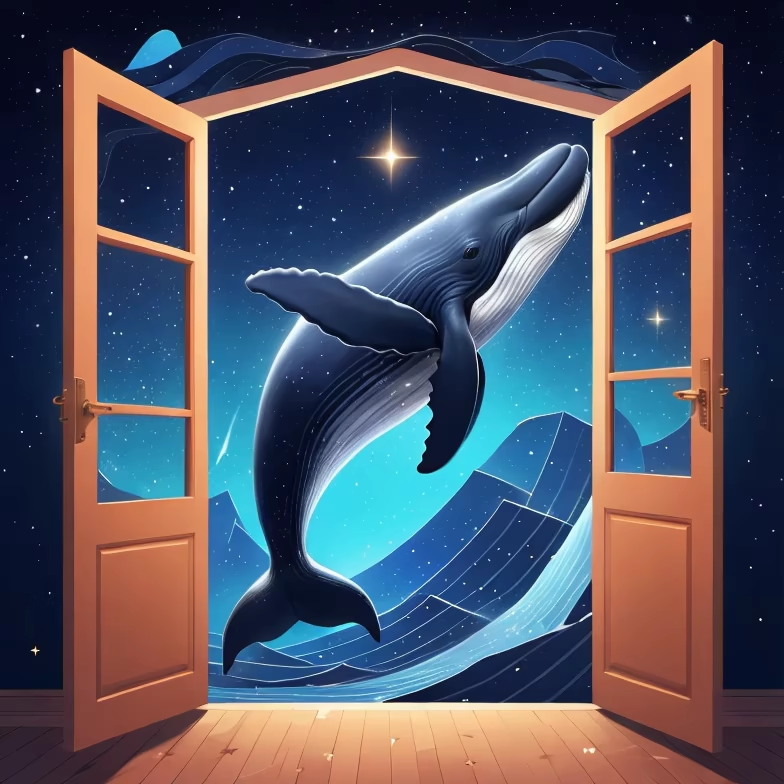
Prompt: Mathematical notation often involves symbols, letters, and structures that can appear complex and intimidating, especially to those not familiar with them. This complexity can create a barrier to understanding, leading some to find it unattractive or \"ugly.\"
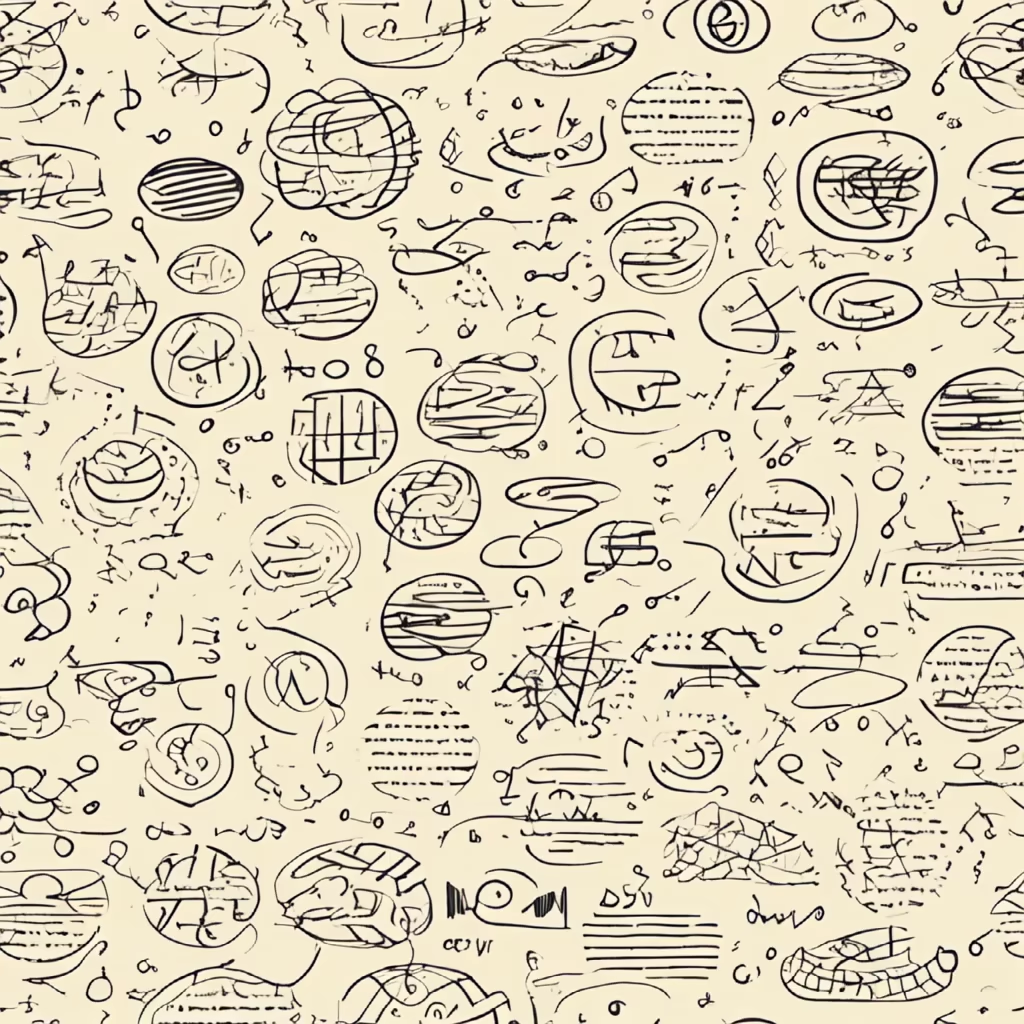


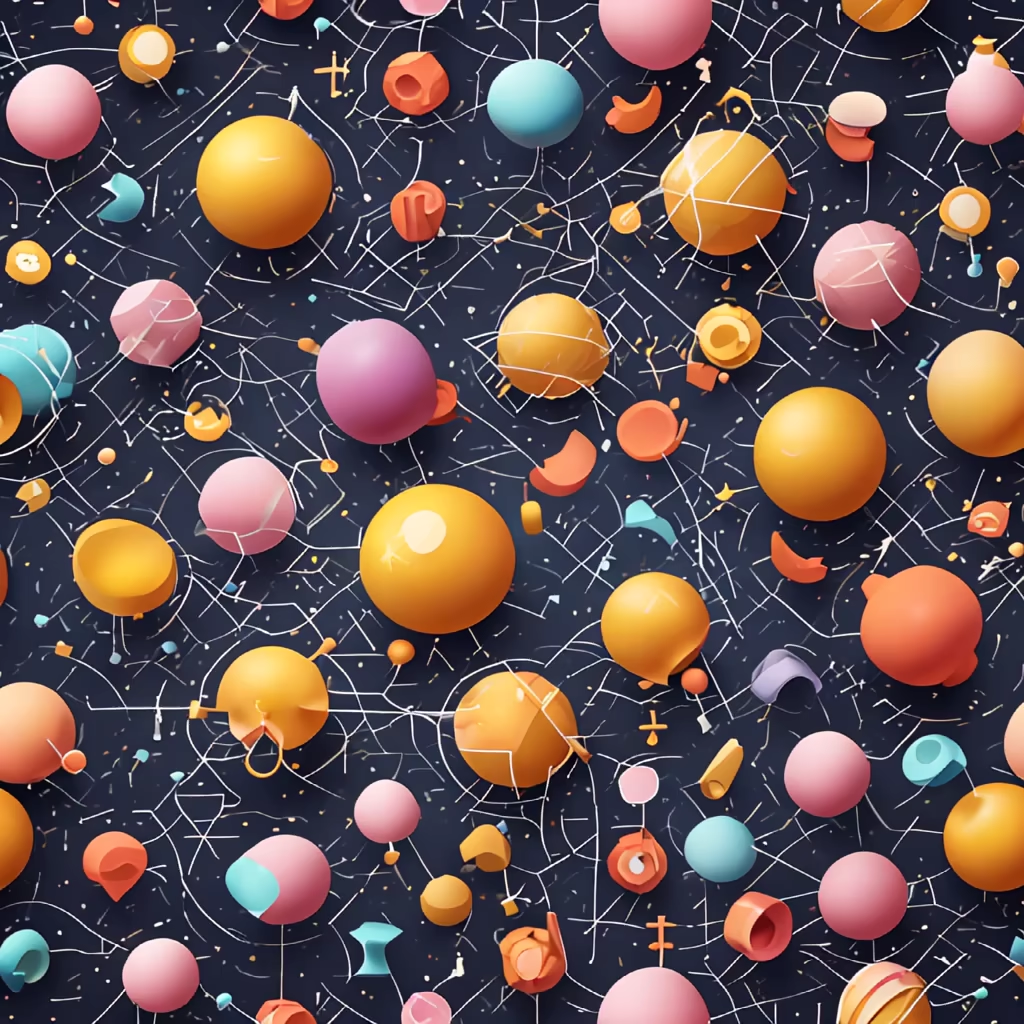
Prompt: Mathematical notation often involves symbols, letters, and structures that can appear complex and intimidating, especially to those not familiar with them. This complexity can create a barrier to understanding, leading some to find it unattractive or \"ugly.\"


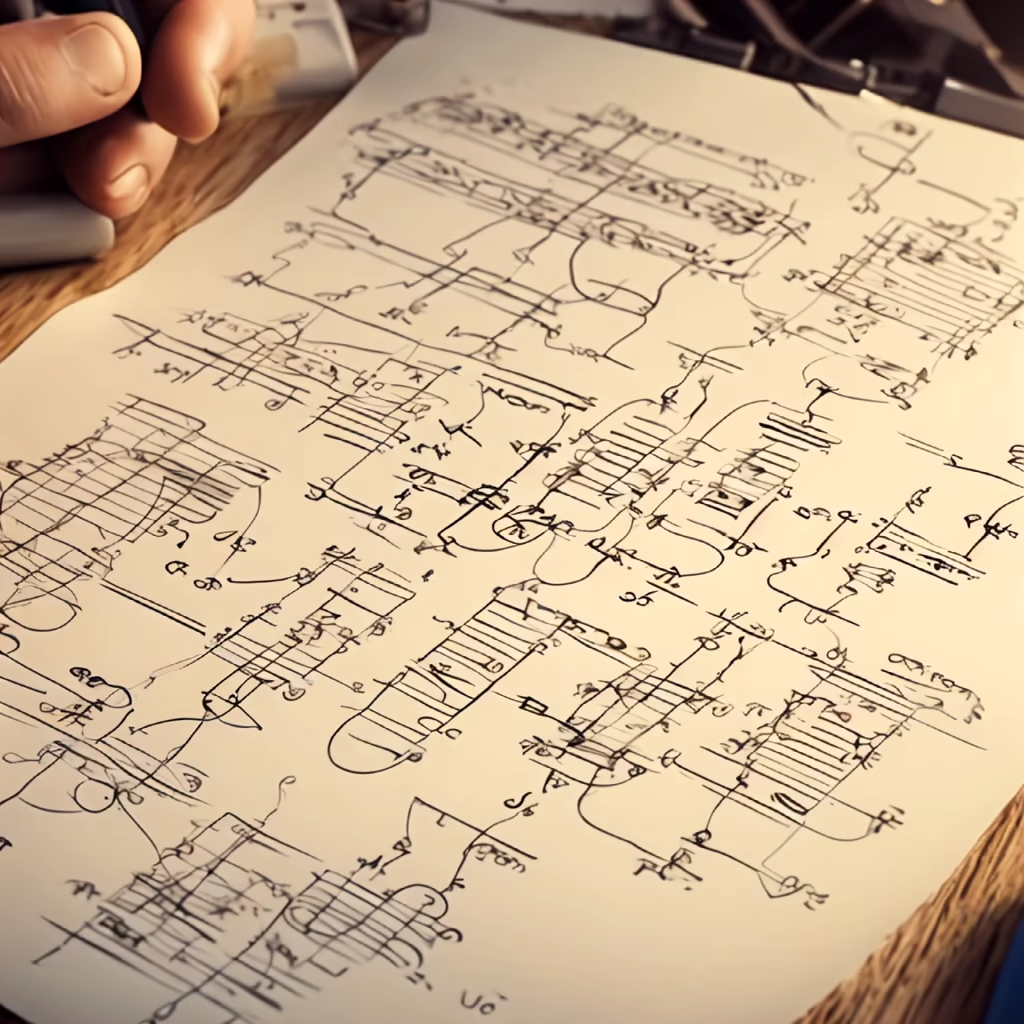



Prompt: This remarkable species, known as the \"Harmonian,\" embodies a seamless blend of traits and attributes derived from Minthy's diverse inhabitants. The Harmonian stands as a testament to the planet's evolutionary richness and adaptability.Physical Structure: The Harmonian possesses a robust and humanoid composition, with bipedal locomotion that provides both stability and agility. Their body structure is sleek and streamlined, allowing for efficient movement in various environments.Head and Facial Features: Their cranial structure is equid-based, striking a balance between intelligence and adaptability. Their facial features are expressive and versatile, capable of conveying a wide range of emotions and intentions.Limbs and Hands: Their limbs are a harmonious fusion of traits from different species. They have webbed appendages for aquatic propulsion, allowing them to navigate underwater with grace. In the air, their fin-like extensions provide lift and maneuverability. On land, these limbs are strong and versatile, enabling them to explore diverse terrains.Hands and Grasping Ability: The Harmonian possesses opposable thumb-like digits that provide fine motor skills and precise grasping abilities, essential for tool use and manipulation of objects.Dietary Adaptation: Their adaptable digestive system allows them to consume a wide range of vegetation and carnivorous resources, ensuring they can thrive in a variety of ecosystems. They have a unique ability to extract nutrients from different food sources efficiently.Communication: The Harmonian's communication skills are highly developed, drawing from the diverse communication methods of Minthy's species. They can convey messages through electromagnetic signals, bioluminescent displays, tactile interactions, scent trails, and even taste and smell signals.Appearance: Their appearance is a mesmerizing amalgamation of visual patterns, vibrant colors, and iridescent scales that serve both aesthetic and communicative purposes. These features make them not only adaptable but also captivating to observe.The Harmonian is a testament to Minthy's complex and diverse ecosystem, where adaptation and coexistence have led to the creation of a truly remarkable and harmonious species capable of thriving in any environCment and communicating with a rich tapestry of sensory cues.
Style: Photographic


Prompt: This remarkable species, known as the \"Harmonian,\" embodies a seamless blend of traits and attributes derived from Minthy's diverse inhabitants. The Harmonian stands as a testament to the planet's evolutionary richness and adaptability.Physical Structure: The Harmonian possesses a robust and humanoid composition, with bipedal locomotion that provides both stability and agility. Their body structure is sleek and streamlined, allowing for efficient movement in various environments.Head and Facial Features: Their cranial structure is equid-based, striking a balance between intelligence and adaptability. Their facial features are expressive and versatile, capable of conveying a wide range of emotions and intentions.Limbs and Hands: Their limbs are a harmonious fusion of traits from different species. They have webbed appendages for aquatic propulsion, allowing them to navigate underwater with grace. In the air, their fin-like extensions provide lift and maneuverability. On land, these limbs are strong and versatile, enabling them to explore diverse terrains.Hands and Grasping Ability: The Harmonian possesses opposable thumb-like digits that provide fine motor skills and precise grasping abilities, essential for tool use and manipulation of objects.Dietary Adaptation: Their adaptable digestive system allows them to consume a wide range of vegetation and carnivorous resources, ensuring they can thrive in a variety of ecosystems. They have a unique ability to extract nutrients from different food sources efficiently.Communication: The Harmonian's communication skills are highly developed, drawing from the diverse communication methods of Minthy's species. They can convey messages through electromagnetic signals, bioluminescent displays, tactile interactions, scent trails, and even taste and smell signals.Appearance: Their appearance is a mesmerizing amalgamation of visual patterns, vibrant colors, and iridescent scales that serve both aesthetic and communicative purposes. These features make them not only adaptable but also captivating to observe.The Harmonian is a testament to Minthy's complex and diverse ecosystem, where adaptation and coexistence have led to the creation of a truly remarkable and harmonious species capable of thriving in any environCment and communicating with a rich tapestry of sensory cues.
Style: Photographic


Prompt: This remarkable species, known as the \"Harmonian,\" embodies a seamless blend of traits and attributes derived from Minthy's diverse inhabitants. The Harmonian stands as a testament to the planet's evolutionary richness and adaptability.Physical Structure: The Harmonian possesses a robust and humanoid composition, with bipedal locomotion that provides both stability and agility. Their body structure is sleek and streamlined, allowing for efficient movement in various environments.Head and Facial Features: Their cranial structure is equid-based, striking a balance between intelligence and adaptability. Their facial features are expressive and versatile, capable of conveying a wide range of emotions and intentions.Limbs and Hands: Their limbs are a harmonious fusion of traits from different species. They have webbed appendages for aquatic propulsion, allowing them to navigate underwater with grace. In the air, their fin-like extensions provide lift and maneuverability. On land, these limbs are strong and versatile, enabling them to explore diverse terrains.Hands and Grasping Ability: The Harmonian possesses opposable thumb-like digits that provide fine motor skills and precise grasping abilities, essential for tool use and manipulation of objects.Dietary Adaptation: Their adaptable digestive system allows them to consume a wide range of vegetation and carnivorous resources, ensuring they can thrive in a variety of ecosystems. They have a unique ability to extract nutrients from different food sources efficiently.Communication: The Harmonian's communication skills are highly developed, drawing from the diverse communication methods of Minthy's species. They can convey messages through electromagnetic signals, bioluminescent displays, tactile interactions, scent trails, and even taste and smell signals.Appearance: Their appearance is a mesmerizing amalgamation of visual patterns, vibrant colors, and iridescent scales that serve both aesthetic and communicative purposes. These features make them not only adaptable but also captivating to observe.The Harmonian is a testament to Minthy's complex and diverse ecosystem, where adaptation and coexistence have led to the creation of a truly remarkable and harmonious species capable of thriving in any environCment and communicating with a rich tapestry of sensory cues.
Style: Photographic




Prompt: A microscopic explorer observed the intricate patterns and designs within populations of bacteria through a high-powered electron microscope, their elaborate cellular structures and organizational motifs expressed through a vivid fusion of micrograph images, abstract artistic renderings and imaginative anthropomorphizations in a thought-provoking multimedia composition illuminated by the cold, clarifying light of scientific inquiry.

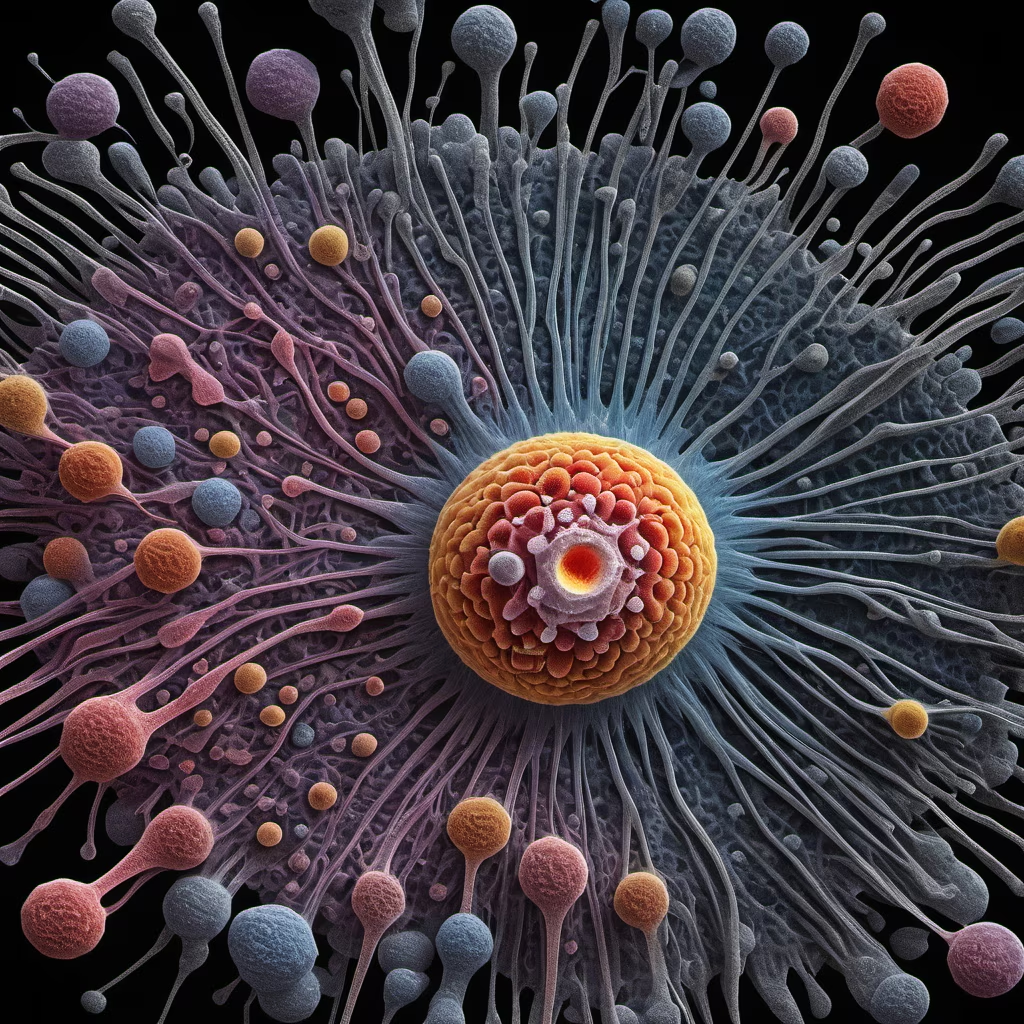
Prompt: Front paws: Its front paws can transform into three-fingered hands, similar to human hands, which can grab and manipulate objects, as well as support its body and increase its stability. Its fingers are made of flexible materials, which can bend and stretch, adapting to different scenarios and needs. Hind legs: Its hind legs have a wheel-shaped butt, similar to a balance car structure, which can glide quickly on the ground, improving its mobility and efficiency. Its wheels are made of wear-resistant rubber, which can adapt to various road conditions, and can also fold up, turning into normal hind legs, convenient for crawling and jumping. Tail: Its tail is a lightweight folding high-performance solar panel, which can collect and store solar energy, providing continuous power for the mechanical dog. Its tail can also be used to adjust the mechanical dog’s balance and direction, as well as communicate and signal with humans or other mechanical dogs. Abdomen: Its abdomen has a built-in neural diffusion module, which can exchange and collaborate data with other mechanical dogs or smart devices through wireless networks, achieving group intelligence and autonomous learning. Its abdomen also has a technology umbrella, which can use high-tech jet spray to protect the mechanical dog from rain and snow. This technology umbrella is a product of Dyson, using aerodynamics to create an airflow shield that can resist wind and rain. Eyeballs: Its eyeballs have high-brightness lighting beads, which can emit strong light in dark environments, illuminating the surrounding objects and scenes. Its eyeballs can also rotate and adjust, adapting to different light and distance, improving its visual clarity and accuracy. Vision system: Its vision system is the slit between its eyes, which has a built-in small X-ray device, which can penetrate and analyze the internal structure and composition of objects, finding potential dangers and opportunities. Its vision system can also switch to different modes, such as infrared, ultraviolet, microwave, etc., to adapt to different environments and tasks. Other parts: Its other parts, such as head, neck, back, torso, etc., also have auxiliary cameras, which can detect the surrounding situation 360 degrees, improving the mechanical dog’s perception and reaction ability. Its other parts are also made of high-strength metal and plastic, which can resist impact and wear, ensuring the mechanical dog’s durability and safety.


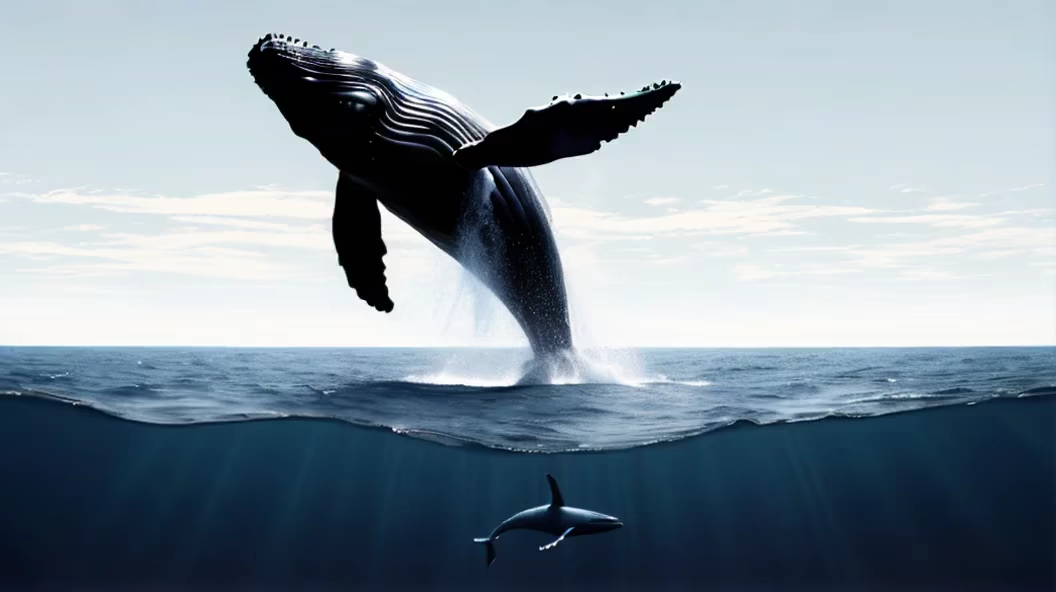
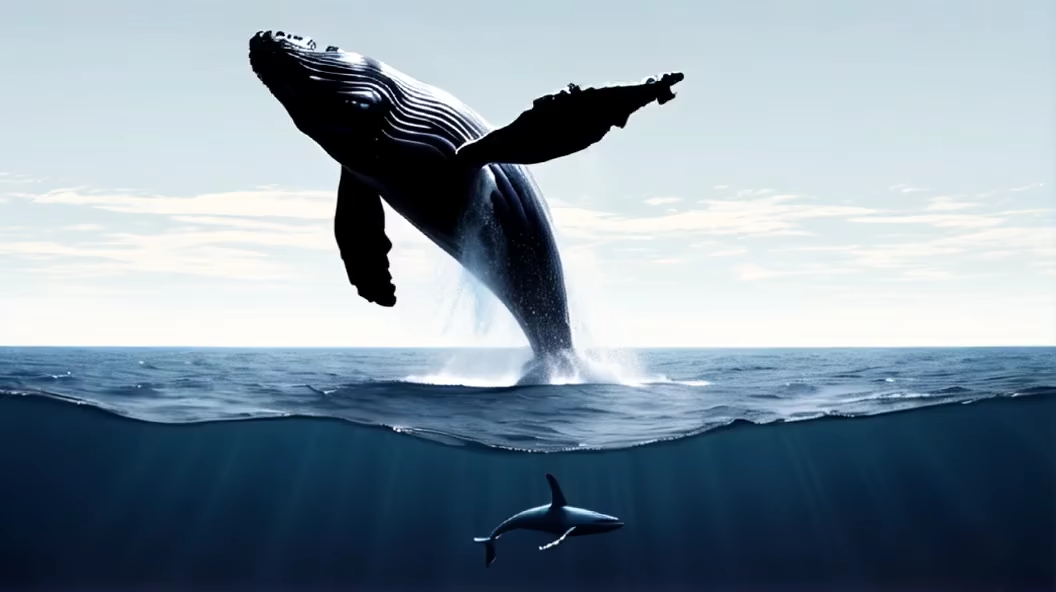
Prompt: a stunning visual representation of a colossal water creature, dwelling in the depths of the ocean. Design a creature with sinuous, flowing forms, blending characteristics of marine life like whales, squids, and bioluminescent organisms. Envision the creature surrounded by a gentle, bioluminescent glow that illuminates its massive, yet elegant silhouette. Incorporate details such as graceful fins, tendrils, or other water-inspired appendages that convey a sense of both power and fluidity. Place the creature in a deep-sea environment, with hints of mysterious underwater terrain, perhaps including ancient ruins or vibrant coral reefs. Use a deep and immersive color palette to evoke the mysteries of the ocean depths, including shades of deep blue, luminescent greens, and subdued purples, in the style of yoshitaka amano


Prompt: a stunning visual representation of a colossal water creature, dwelling in the depths of the ocean. Design a creature with sinuous, flowing forms, blending characteristics of marine life like whales, squids, and bioluminescent organisms. Envision the creature surrounded by a gentle, bioluminescent glow that illuminates its massive, yet elegant silhouette. Incorporate details such as graceful fins, tendrils, or other water-inspired appendages that convey a sense of both power and fluidity. Place the creature in a deep-sea environment, with hints of mysterious underwater terrain, perhaps including ancient ruins or vibrant coral reefs. Use a deep and immersive color palette to evoke the mysteries of the ocean depths, including shades of deep blue, luminescent greens, and subdued purples.


Prompt: Think of the universe as an immense database, and each particle as a unique entry. Quantum Gravity is like an advanced search algorithm that attempts to reconcile the information stored in the database (quantum mechanics) with the overall structure of the database itself (general relativity).






Prompt: Antarctic icebergs float in the sea, they have a part above the water, and another part below the water,Their underwater part is bigger, deeper, and more mysterious than their above-water part,They have different colors and temperatures under the water, sometimes there are fish, seals, penguins and other animals swimming around them, like an underwater world


Prompt: Antarctic icebergs float in the sea, they have a part above the water, and another part below the water,Their underwater part is bigger, deeper, and more mysterious than their above-water part,They have different colors and temperatures under the water, sometimes there are fish, seals, penguins and other animals swimming around them, like an underwater world
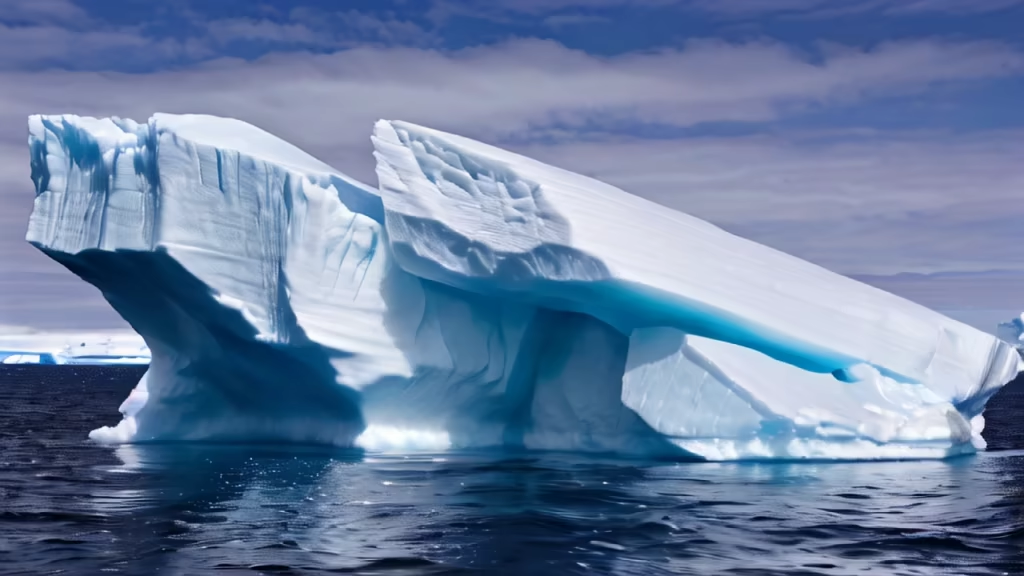

Prompt: Explore the mystery of the Bermuda Triangle: an area surrounded by mysterious stories, rumored to engulf planes and ships. However, modern science focuses more on natural and technological factors, explaining the disappearances. Explore this enigmatic zone and unravel the truth behind the vanished events and the mist.



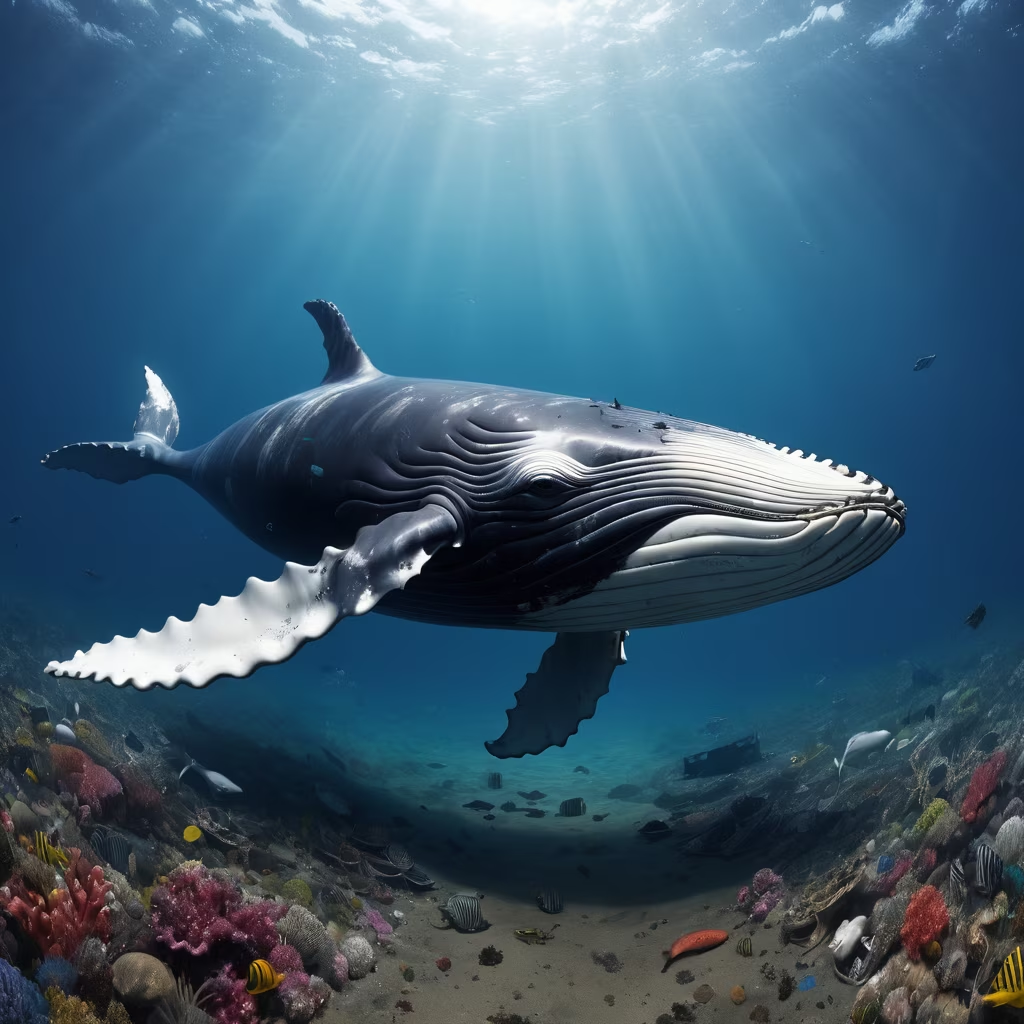
Prompt: Because of the harsh desert environment, future humans gave up talking, they invented a sensor that can communicate through brain waves.


Prompt: Illustrate the tortoise using its protective shell to shield the group from danger. Perhaps the hunter attempts to strike, but the tortoise's shell acts as a formidable barrier, showcasing the strength that comes from diversity.


Prompt: Physical Evolution: Abysammals have further adapted to their deep-sea habitats. They have developed elongated, streamlined bodies with bioluminescent patterns that help them navigate and communicate in the darkness of the abyss. Some species have evolved specialized sensory organs for detecting subtle changes in water pressure and temperature.Society: Abysammals have formed advanced civilizations in the deep-sea regions, complete with organized cities and complex societal structures. These underwater cities are constructed from materials sourced from the ocean floor and are designed to withstand the immense pressure of the abyss. Each city is led by a council of elders, chosen for their wisdom and experience.Language and Culture: Abysammals communicate primarily through a complex system of echolocation-imprint waves, which have evolved into a sophisticated language with regional dialects and cultural variations. Their culture places a strong emphasis on communal living, resource management, and the preservation of the delicate deep-sea ecosystem.Technology: Abysammals have developed advanced bioluminescent technology, including underwater lighting systems and communication devices. They have also mastered the art of underwater agriculture, cultivating bioluminescent organisms for both sustenance and illumination.Traditions: Abysammals have developed elaborate rituals and ceremonies centered around bioluminescent displays, which are used to celebrate important events such as births, unions, and rites of passage. They have a deep reverence for the abyss and its mysteries, often exploring uncharted depths in search of knowledge and resources.
Style: Isometric

